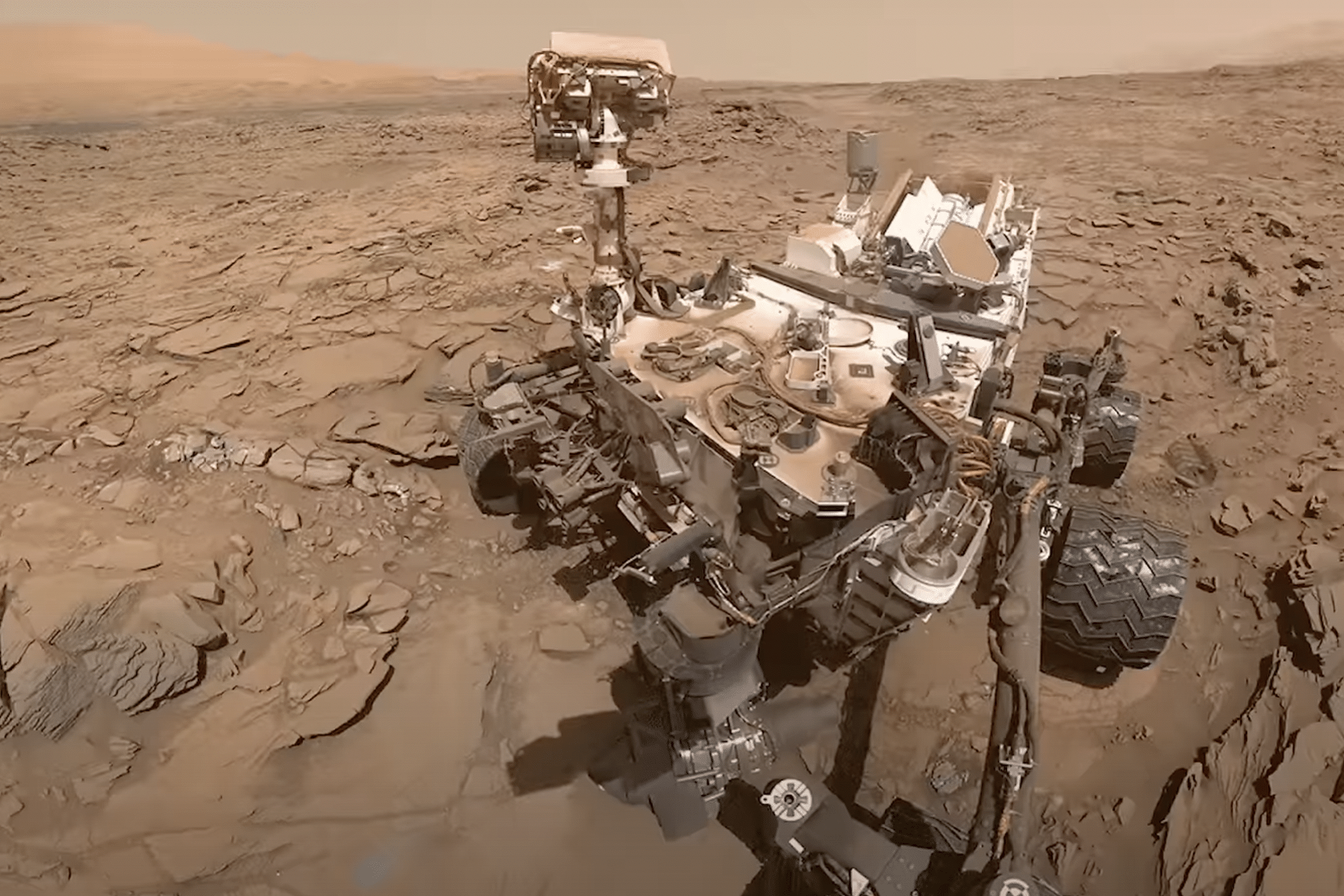Science
Ten Years And Still Going Strong: How NASA Engineers Are Keeping Curiosity Mars Rover Rolling

Curiosity Rover
Curiosity Rover, NASA's SUV-sized Mars explorer, has completed ten years on the Martian surface.
Mars exploration through Curiosity
The rover had landed on Mars on 5 August 2012 in pursuit of evidence that, billions of years ago, the Red Planet had the conditions needed to support microscopic life.
Since then, Curiosity has driven nearly 29 kilometers and ascended 625 meters on Martian surface as it explores Gale Crater and the foothills of Mount Sharp within it.
The rover has analysed 41 rock and soil samples, relying on a suite of science instruments to learn what they reveal about Earth’s rocky sibling.
Further, it has studied the Red Planet’s skies, capturing images of shining clouds and drifting moons.
The rover’s radiation sensor lets scientists measure the amount of high-energy radiation future astronauts would be exposed to on the Martian surface, helping NASA figure out how to keep them safe.
Extension Of Curiosity's Mission
Initially, Curiosity was intended for a two-year mission on Mars but later NASA decided to extend the rover's mission.
Despite signs of wear, the rover is still operational and has been active on Mars for over 10 years now.
Recently, Curiosity’s mission was extended for another three years, allowing it to continue among NASA’s fleet of important astrobiological missions.
Challenges in extending Curiosity's mission.
Curiosity is powered by a Radioisotope Thermoelectric Generator (RTG). The multi-mission RTG of the rover generates electricity from heat produced by radioactive decay of Plutonium-238, and keeps the vehicle rolling for a long-time. But, RTG too has its limit as the Plutonium pellets gradually decay, thus reducing its efficiency.
The rover’s ageing wheels and mechanical systems present another challenge for further extension of its mission.
In a bid to extend the life of the rover, a team of hundreds of dedicated engineers working both in person at NASA's Jet Propulsion Laboratory (JPL) and remotely from home has devising ways to minimise wear and tear and keep the rover rolling.
Intelligent use of Rover's instruments
The engineers catalogue each and every crack in the wheels, test every line of computer code before it’s beamed into space, and drill into endless rock samples in JPL’s Mars Yard, ensuring Curiosity can safely do the same.
“As soon as you land on Mars, everything you do is based on the fact that there’s no one around to repair it for 100 million miles,” said Andy Mishkin, Curiosity’s acting project manager at JPL, according to a NASA release.
“It’s all about making intelligent use of what’s already on your rover," Mishkin added.
Curiosity’s robotic drilling process, for example, has been reinvented multiple times since landing. At one point, the drill was offline for more than a year as engineers redesigned its use to be more like a handheld drill.
More recently, a set of braking mechanisms that allow the robotic arm to move or stay in place stopped working. Although the arm has been operating as usual since engineers engaged a set of spares, the team has also learned to drill more gently to preserve the new brakes.
To minimize damage to the wheels, engineers keep an eye out for treacherous spots like the knife-edged “gator-back” terrain they recently discovered, and they developed a traction-control algorithm to help as well.
The team has taken a similar approach to managing the rover’s slowly diminishing power. Because of the pellets’ gradual decay, the rover can’t do quite as much in a day as it did during its first year.
Mishkin said the team is continuing to budget how much energy the rover uses each day, and has figured out which activities can be done in parallel to optimise the energy available to the rover.
“Curiosity is definitely doing more multitasking where it’s safe to do so,” Mishkin added.
The team expects that the Curiosity still has years of exploring ahead of it through careful planning and engineering hacks.
Introducing ElectionsHQ + 50 Ground Reports Project
The 2024 elections might seem easy to guess, but there are some important questions that shouldn't be missed.
Do freebies still sway voters? Do people prioritise infrastructure when voting? How will Punjab vote?
The answers to these questions provide great insights into where we, as a country, are headed in the years to come.
Swarajya is starting a project with an aim to do 50 solid ground stories and a smart commentary service on WhatsApp, a one-of-a-kind. We'd love your support during this election season.
Click below to contribute.
Latest